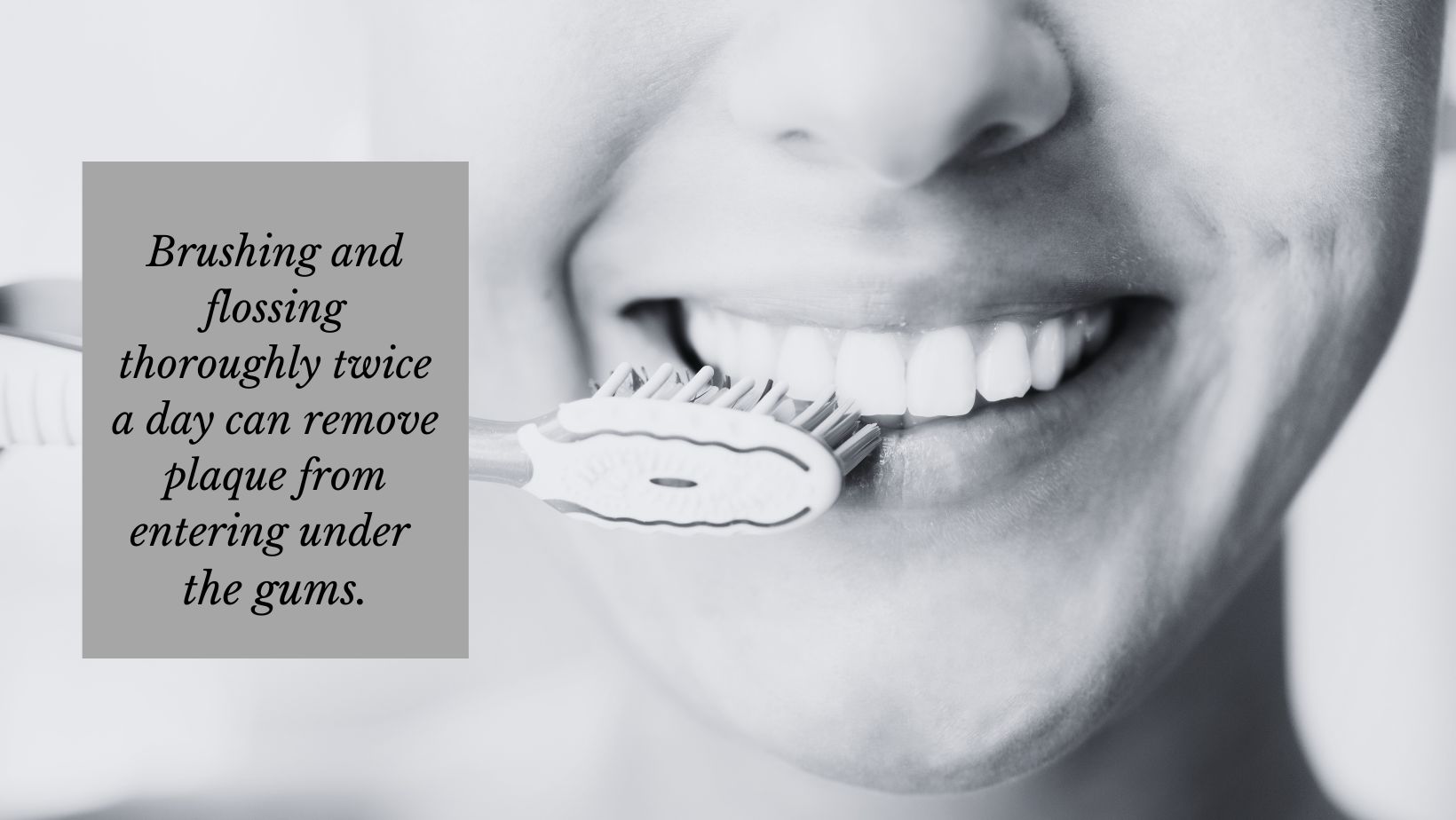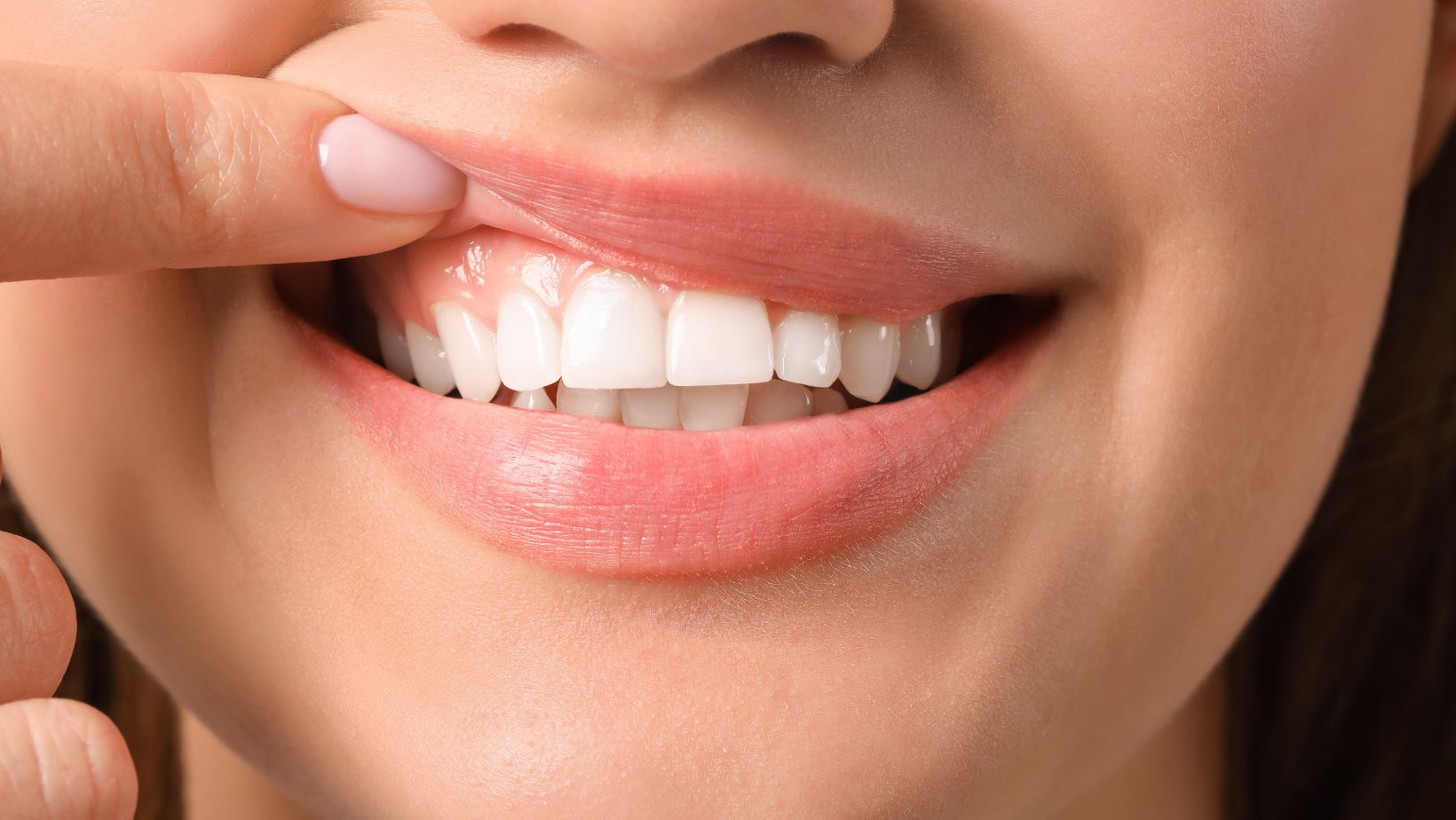Tooth sensitivity is never a good sign when it comes to oral health. But if sensitivity is accompanied by a receding gum line, patients should definitely see a dentist. Not only can this condition lead to further pain and discomfort; the supporting tissue and bone structure could be compromised, causing loss of teeth.
In some cases, improving oral hygiene can prevent gums from receding further. More severe cases call for specialized surgical treatment.
Symptoms of a Receding Gum Line
Gums have the important job of protecting the roots of our teeth. When gums pull away from the teeth, those roots become exposed, allowing bacteria into little pockets that form in that area. Patients with receding gums will feel sensitivity while drinking, brushing, or eating. Due to the infection, bad breath may also be present. Visible signs of gum recession include:
- Teeth appear longer
- Gaps or spaces between teeth
- Bleeding after brushing
- Red, swollen gums
- Changes in how the teeth fit together while biting down
If receding gums have been left untreated, teeth may be loose where an infection has settled into the bone structure.
Measuring Severity of Gum Recession
Symptoms and treatment will depend on the severity of the case. Dentists measure recession according to the distance between the margin of the crown and the level of the gums.
Class I – Mild gum recession. No bone loss or tissue loss between teeth.
Class II – Gum recession extends to the border of the attached and loose gingiva. No bone loss or tissue loss between teeth.
Class III – Gum recession extends past the border of attached and loose gingiva. Bone loss or tissue loss between teeth is evident. The root is still partially covered.
Class IV – Gross loss of bone, and no root coverage.
Common Causes of Receding Gums
Gums can pull away from teeth for various reasons.
Gum Disease
The most common cause of gum recession is periodontal disease. According to the Centers for Disease Control (CDC), nearly half of all adults over 30 have diseased gums, and 70% of adults over 60 suffer from periodontal disease. Poor oral care is the main culprit. When food and beverages are not removed from the teeth, a sticky film of bacteria settles in and eats away at protective enamel. Insufficient brushing and flossing allow plaque to form cavities and to settle into the gums, leading to infection.
Aggressive Brushing
Brushing teeth too hard can scrape away at enamel and expose the layer of dentin underneath. Eventually, this causes gum recession.
Tobacco Use
Cigarettes and other tobacco products leave plaque on the teeth and gums. What’s worse, smoking causes a lack of oxygen in the bloodstream, so gums do not heal well even with treatment.
Crooked Teeth
Teeth that have a lot of hard-to-reach nooks and crannies are likely to harbor bacteria that lead to plaque buildup, and eventually infection in teeth and gums. This is why orthodontic care is so important.
High Frenal Attachment
In the mouth, there is soft tissue called frena that allows muscles to move the cheeks, lips, and tongue. If the frena are attached too high, the gums pull away from teeth as the mouth moves. The condition often requires corrective surgery during childhood.
How to Prevent Gums From Receding
Prevention is key to avoiding gum recession. Avoiding smoking and eating a healthy, low-sugar diet is important for keeping plaque from settling into teeth. A proper oral hygiene routine should also be a first priority for patients, and should consist of:
- Brushing teeth for two minutes, at least twice a day, preferably with an electric toothbrush.
- Flossing daily to remove bacteria and plaque from settling in between teeth..
- Use an antibacterial mouthwash with fluoride to keep teeth strong.
- Bi-annual professional dental cleanings to remove tartar and plaque buildup.
Patients should always monitor their own oral health. If any signs of gum disease are present, including sensitivity, bleeding, swelling, and receding gums, they should make an appointment with a dentist as soon as possible.

Seeking Prompt Receding Gums Treatment is Crucial
Treatment for gum recession depends on how far the gums have already pulled away from the teeth. The longer gum disease is left untreated, the more serious the treatment will be.
For mild cases, improving oral hygiene could be sufficient. Brushing and flossing thoroughly twice a day can remove plaque from entering under the gums. Using a sensitive toothpaste such as Sensodyne can make brushing more comfortable.
Moderate cases may require a minor deep cleaning surgery called root planing and scaling. After applying local anesthesia, a dentist will scrape away tartar and plaque buildup on the surface of the roots, and clean under the gums. To make it harder for plaque to stick in the future, the dentist will use a scaler to scrape off and smooth the surface of the teeth above and below the gum line.
When receding gums have been left untreated for too long, a tissue graft may be necessary to encourage the body to regrow gum tissue. During the procedure, the dentist or periodontist will remove connective tissue from the roof of the mouth, apply it to the area where gums are receding, and then reattach it to the top of the mouth.
In some cases, surgery is not necessary. Instead, tissue-stimulating proteins can be used to encourage gum tissue growth.
Regular Checkups Are The Best Way to Detect Early Gum Disease
Visiting the dentist every six months not only removes disease-causing plaque and tartar; it also allows for early detection of receding gums. If your professional dental team notices signs that gums are pulling away from the teeth, they will develop a plan to prevent further recession and save your teeth.
Don’t have a regular dentist you trust, use our online search tool to find a dentist near you.


